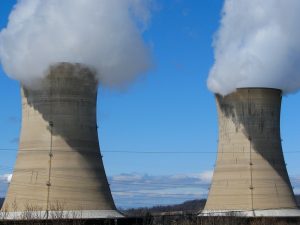 The earthquake and subsequent tsunami which caused untold damage in Japan has also sparked new concerns regarding nuclear energy. Japan is a world leader in nuclear energy with a total of 55 plants operating within the country. Japan’s geographical placement near major fault-lines on the pacific rim of fire it is also prone to earthquakes and tsunamis. Due to the fact that Japan imports 61% of it’s energy needs nuclear energy seems to be a logical option for the country, but is building nuclear power plants in an active seismic zone a good idea?
The earthquake and subsequent tsunami which caused untold damage in Japan has also sparked new concerns regarding nuclear energy. Japan is a world leader in nuclear energy with a total of 55 plants operating within the country. Japan’s geographical placement near major fault-lines on the pacific rim of fire it is also prone to earthquakes and tsunamis. Due to the fact that Japan imports 61% of it’s energy needs nuclear energy seems to be a logical option for the country, but is building nuclear power plants in an active seismic zone a good idea?
The main reason that the Fukushima Daiichi nuclear power plant in Japan was damaged by the tsunami is that the retaining walls around the plant were only designed to handle a wave of five meters and the earthquake which struck japan produced a tsunami that was 10m high. The tsunami damaged the buildings which housed the fuel rods within the reactor core resulting in fires and the release of radioactive steam. It appears that the situation is being brought under control. The “atomic samurai”, a group of 500 workers who have stayed behind to try and avert a meltdown by cooling the fuel rods, are bringing the plant back on the power grid, but the risk of future nuclear crisis caused by nuclear disaster is too great to be ignored.
In our current economic climate which rewards short term gains and ignores long term consequences nuclear power may be a necessity. The long term cost associated with nuclear power, however, greatly outweigh the benefits. Nuclear waste must be contained and is still dangerous after thousands of years, and no matter how nuclear plants are constructed there is always the risk of human error or natural disaster triggering a meltdown. Japan’s nuclear crisis is currently being brought under control but unless we make a concerted effort to develop truly renewable sources of energy worldwide we will never be free of the nuclear energy poses to our planet.


